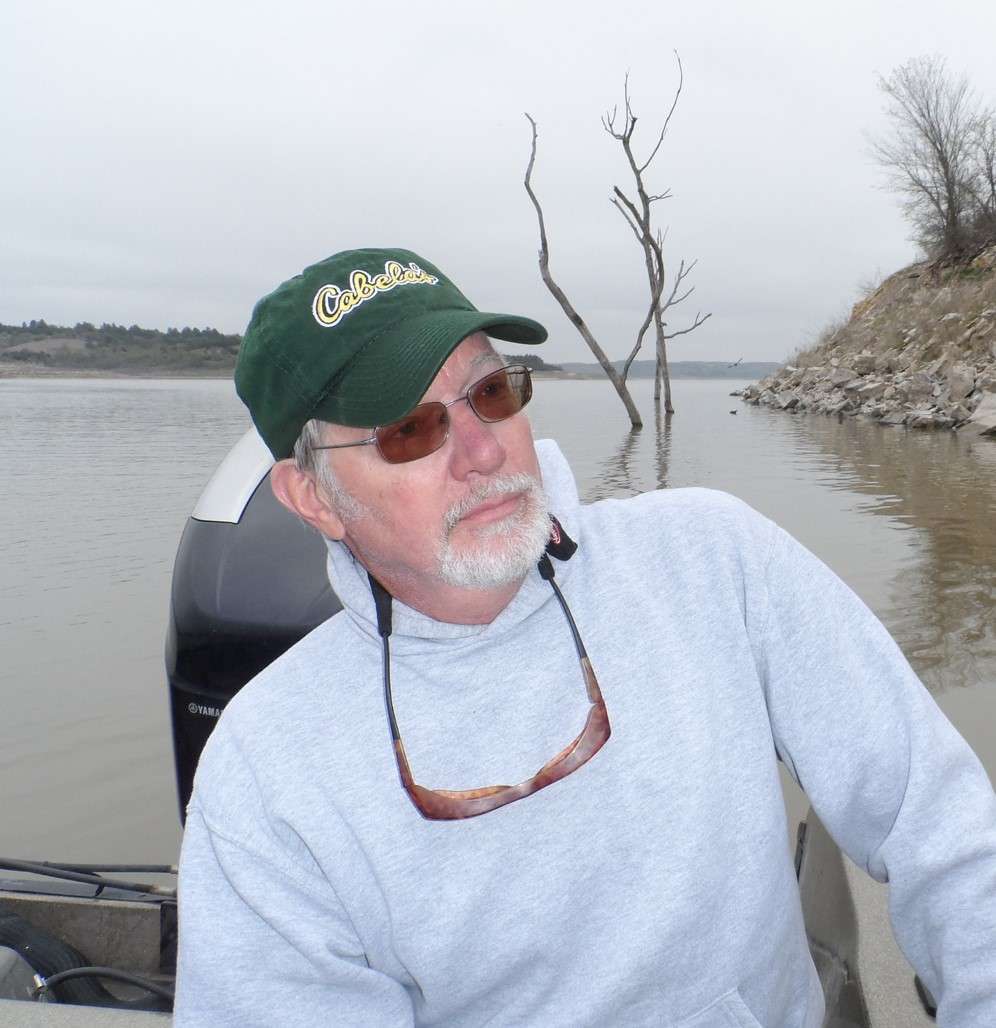Last week a friend who owns property along a local lake told me beavers have been making a mess by chewing and cutting down trees along the lake; somewhat surprising, because of the extremely dry winter, the water in the lake has receded to the point where it’s easily ten yards from the bank out to the water anywhere you look. For beavers living in bank dens, that doesn’t bode well for their survival, given water is their safety net. I walked along the bank, and sure enough, freshly chewed trees and wood chips were everywhere in a short stretch of trees just off the road. I clamored down the bank to the dry shoreline below, and a couple beaver runs ran from holes in the rocky covered bank out toward the water. One run looked unused, but the other still had a couple inches of water in it and was covered in tracks. I seriously doubted beavers still resided there given the stretch of dry shoreline out to the water, but how could I be sure?
Trail cameras can be a deer hunter’s best scouting tool, but don’t be afraid to think outside the box and use them for other purposes. I stuck a “T” post in the mud in front of both beaver runs and hung a trail camera from each to show me whether those once-active beaver dens still had residents, or whether I should look elsewhere. We bought our first two trail cameras about 10 years ago. We had a small bucket feeder in a tree at the edge of a thick woodlot overlooking a small, grassy meadow with tons of deer sign. In the meadow we drove in a “T” post, strapped one camera to the post aimed at the feeder, and thought we’d soon be selling shots to National Geographic. I’ll never forget the excitement we felt as we popped the photo card in the computer for the first time to view our award-winning pictures. And sure enough, there they were; a couple hundred shots of trees and grass swaying and waving in the breeze! I felt like the party balloon that floats triumphantly around the room but lands flat at your feet when someone pops it. We were terribly disappointed, that is until we talked to other trail camera users and got some experience under our belts. If you don’t remember anything else from this column, remember this; EVERYONE who uses trail cameras gets empty shots like that, I’ll tell you some things you can do to hold those empty shots to a minimum, but you will still get some. The key (obviously) is movement. Trail cameras are triggered partially by movement, so the first rule of thumb is to fasten the camera securely to something that won’t move. If the sapling or post holding the camera sways in the breeze, it will take pictures each time it moves.
Secondly, always carry a set of pruners and a limb saw when setting cameras. The signal sent out by the cameras detection circuitry extends out from the lens as a cone shape, and any movement within that cone will trigger the camera. A little creative pruning of limbs, grass etc. goes a long way. The trick is to remove all that while still leaving the surroundings as natural as possible. Sometimes it’s good to do that on a windy day so you can see everything that might be a problem, both from the sides and from above.
Thirdly, try NOT to face the camera directly east toward the rising sun, or directly west toward the setting sun. We’ve gotten our share of shots that looked like a blazing asteroid falling slowly toward earth. They were photos of the slowly setting sun. Angling the camera slightly one way or the other seems to solve this problem.
Sometimes finding a good spot to anchor a camera is a challenge. We often employ one or more bungee cords in the process, and have used “T” posts, electric fence posts (which proved to be rather flimsy) concrete rebar posts made to hold a mineral block, and every size and shape tree imaginable. My research into homemade camera mounts found all manner of nifty rigs, several made from screw-in steps used to climb into a tree stand. You can buy about whatever kind of mount you need, or make them for a little of nothing if you’re even reasonably crafty.
Don’t be afraid to make the subject of your trail camera lens something other than deer. Something else to be aware of is livestock where you have cameras. I once tried to get some pictures from a beaver dam, only to have the cameras knocked askew by cattle. Bird nests of all sizes and types, beaver dams and dens, raccoon den trees, coyote dens, game trails and scouting wild turkeys are just a few of the ways and places trail cameras can reward you with fun photos. The main thing is not to worry about getting it perfect the first time. And by the way, I had no pictures of beavers on my 2 cameras, so I guess I need to keep looking. …Continue to Explore Kansas Outdoors.
Steve can be contacted by email at stevenrgilliland@gmail.com



